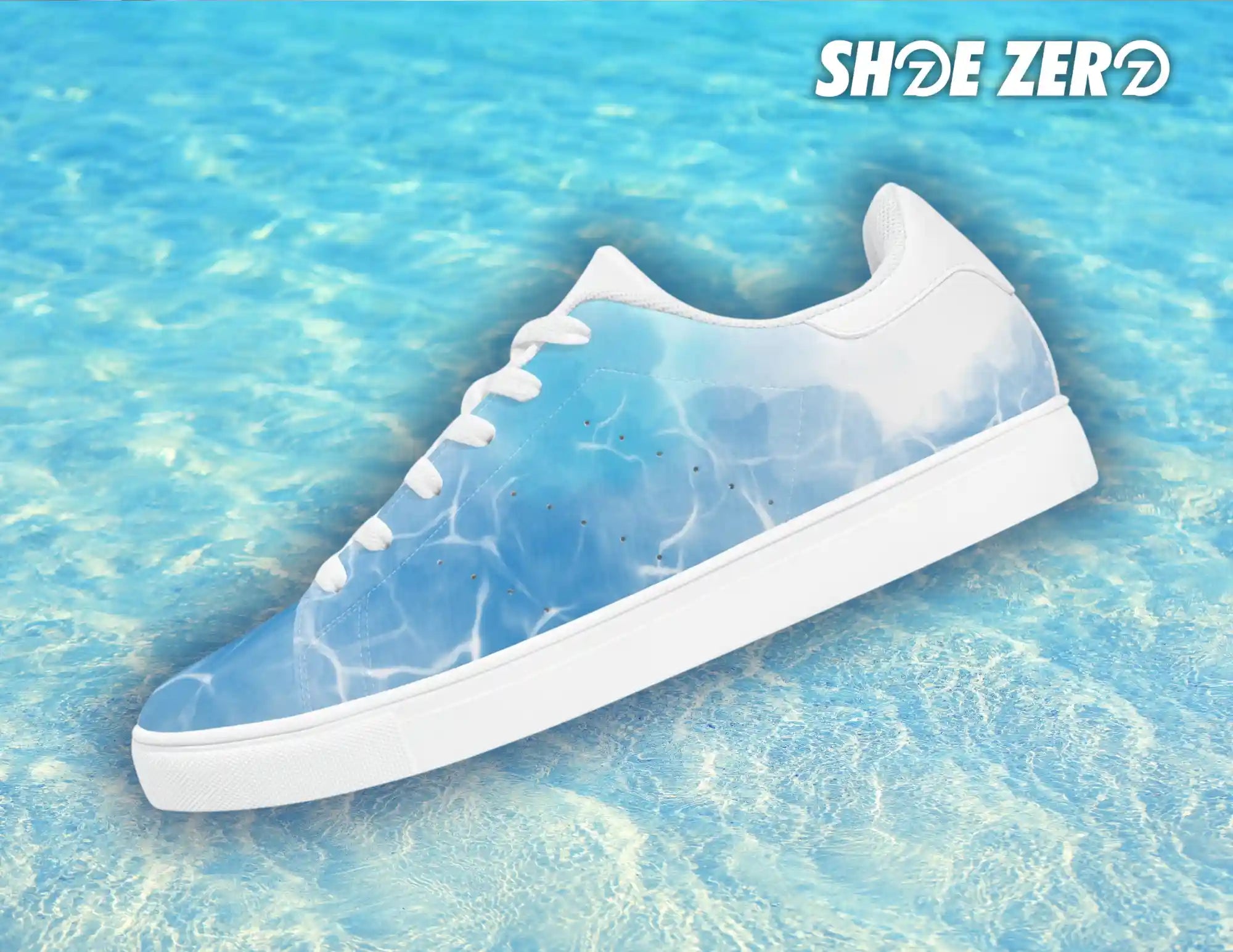Choosing the Right Shoes to Stretch
Stretching shoes can be a great solution for improving their fit, but not all shoes are created equal when it comes to being stretchable. It's essential to choose the right shoes to avoid damaging them and wasting your time and effort. Here are some tips for selecting shoes that are suitable for stretching:
| Tip | Description |
|---|---|
| Opt for stretchable materials | Choose shoes made of materials that are known to stretch, such as leather, suede, or canvas. Avoid shoes made of stiff or synthetic materials that are difficult to stretch. |
| Look for shoes with stretch features | Some shoes come with features that make them easier to stretch, such as elastic inserts or adjustable straps. These shoes can be a great choice for individuals with foot problems that change throughout the day. |
| Avoid shoes with hard soles | Shoes with hard soles cannot be stretched, so it is best to avoid them. Shoes with rubber or soft soles are more pliable and can be successfully stretched. |
| Know the shoes' construction | Shoes that are glued rather than sewn may not be stretchable. If you're unsure, check with the manufacturer or a professional cobbler before attempting to stretch them. |
Choosing the right shoes is crucial in achieving the best results for stretching. Keep in mind that not all shoes can be stretched, and it's best to avoid damaging them by choosing wisely.
10 Ways to Stretch Out Your Shoes
1. Wearing the Shoes to Stretch Them
One of the simplest methods is also the most traditional – wearing the shoes around the house. Put on a couple of thick socks and slip into the shoes. The socks will help create extra room, and your body heat will gradually expand the material, molding the shoes to your feet.

2. Blow Dryer with Thick Socks
For a quick and targeted solution, try using a blow dryer. Put on a pair of thick socks and then put on the shoes. Heat the tight spots with the blow dryer for a few minutes while wiggling your feet. The heat will soften the material, and the socks will help stretch the shoes.
3. Putting the Shoes in the Freezer
This might sound unconventional, but it works! Fill two resealable bags with water, place them inside your shoes, and then put the shoes in the freezer. As the water freezes and expands, it will gently stretch the shoes. Just be sure to let the ice thaw before removing the bags.
4. Stuffing the Shoes
Stuffing your shoes with materials like balled-up socks, newspapers, or shoe stretchers can help expand the material from the inside. Leave them overnight to allow the shoes to adjust to the new shape. Repeat the process if necessary for further stretching.
5. Using the Peeled Potato Trick
Believe it or not, a peeled potato can work wonders. Insert a peeled potato into the shoe, focusing on the tight areas. As the potato dries, it will expand, stretching out the material. Keep the potato in place for a day or so, and you'll notice a difference.
6. Adjustable Shoe Trees
Investing in adjustable shoe trees is a proactive way to keep your shoes in shape. Adjust the trees to match your shoe's size, and they'll gently stretch the material over time. This is particularly useful for maintaining the shape of leather shoes.
7. Shoe Stretch Sprays and Liquids
Specialized shoe stretch sprays and liquids are designed to soften the material, making it easier to stretch. Follow the manufacturer's instructions for application and wear the shoes while they're still damp to achieve the desired fit.
8. Consult a Professional Cobbler
When dealing with delicate or expensive shoes, seeking the help of a professional cobbler is a wise choice. Cobblers have the expertise to stretch shoes without damaging them. They can also offer advice on the best approach based on the shoe's material.

9. Rubbing Alcohol
A mixture of rubbing alcohol and water can help soften and stretch the material. Dampen a cloth with the solution and rub it on the tight areas. Then, wear the shoes with thick socks to stretch them while the material is still damp.
10. Buy a Shoe Stretcher
Shoe stretchers are specially designed tools that can expand the width and length of your shoes. Insert the stretcher into the shoe and adjust it to your desired size. Leave it in place for a day or two to achieve effective stretching.
Precautions and Tips for Stretching Shoes
When it comes to stretching shoes, it is important to take certain precautions to avoid damaging the footwear or injuring yourself. The following tips will help you stretch your shoes effectively and safely:
1. Start with gentle methods: If you are new to stretching shoes, begin with gentler methods such as using a shoe stretching spray or wearing your shoes with thick socks at home. This will help you avoid overstretching the material or causing any permanent damage.
2. Don't overstretch: Be careful not to overstretch your shoes, as this can cause the material to weaken or even tear. Follow the instructions carefully and remove the shoe stretcher as soon as you achieve the desired level of stretch.
3. Test the shoes before wearing them: Always test your shoes for comfort before wearing them for an extended period. Walk around in them for a few minutes to ensure that they fit well and are not causing any discomfort.
4. Use heat with caution: If you are using heat to stretch your shoes, be careful not to overheat the material as this can cause it to warp or melt. Use a hairdryer on low heat and keep it at least 6 inches away from the shoes.
5. Consider the material: Not all shoes can be successfully stretched, so it's important to consider the material before attempting to stretch them. Shoes made of leather, suede, or canvas are generally good candidates for stretching.
6. Seek professional help if needed: If you are not confident in your ability to stretch your shoes or the shoes are particularly expensive or delicate, consider taking them to a professional cobbler for stretching. They have specialized tools and techniques to stretch shoes effectively and safely.
By following these precautions and tips, you can stretch your shoes effectively and safely, giving you a more comfortable fit and prolonging the life of your footwear.
How to Tell if Shoes Aren't the Right Fit
Ensuring the right fit is essential for your comfort and foot health. Here are some telltale signs that your shoes might not be the right fit:
- Pinched Toes: If your toes feel cramped and pinched, the shoes are likely too small.
- Blisters and Calluses: Friction caused by ill-fitting shoes can lead to blisters and calluses.
- Heel Slippage: If your heels slide up and down excessively, the shoes are too large.
- Arch and Ankle Discomfort: Shoes that don't offer adequate support can lead to discomfort in the arches and ankles.
- Numbness or Tingling: Compression of nerves due to tight shoes can cause numbness or tingling.
Foot Problems from Tight Shoes
Wearing tight shoes can lead to various foot problems, including:
- Bunions: Tight shoes can exacerbate bunions or cause them to form.
- Corns and Calluses: Friction from tight shoes can result in the development of corns and calluses.
- Ingrown Toenails: Pressure from tight shoes can cause toenails to grow into the skin, leading to painful ingrown toenails.
- Hammer Toes: Tight shoes can force the toes into unnatural positions, leading to hammer toes.
- Poor Circulation: Constriction from tight shoes can restrict blood flow, leading to cold feet and potential circulation issues.
If you would like to avoid these problems, here are some tips for you to achieve foot pain relief.
Picking the Right Shoes For You
To avoid the need for excessive shoe stretching, follow these tips when selecting new shoes:
- Size Up: If you're between sizes, opt for the larger size to ensure a comfortable fit.
- Consider Width: Pay attention to shoe width, especially if you have wide feet. Look for options labeled as wide or extra wide.
- Toe Room: Ensure there's enough wiggle room for your toes without feeling cramped.
- Arch Support: Choose shoes with proper arch support to prevent discomfort and foot problems.
- Quality Material: Opt for shoes made from flexible and breathable materials that are less likely to cause discomfort.
- Break Them In: Even well-fitting shoes may require a short break-in period. Wear them for short periods initially to allow the material to mold to your feet.
__________________________________________________
Key Takeaway
Mastering the art of stretching shoes can make the difference between unbearable discomfort and blissful comfort. With these effective methods at your disposal, you can confidently conquer even the tightest of shoes. Remember to choose the method that best suits the material of your shoes, and never compromise on your foot health for style. Happy strutting!
FAQs (Frequently Asked Questions)
1. Can I stretch any type of shoe using these methods?
Yes, these methods can be effective for various types of shoes, including leather, canvas, and suede. However, be cautious with delicate materials and consider consulting a professional for expensive or fragile shoes.
2. How long should I leave the shoe stretcher in place?
The duration depends on the material and the level of stretching required. Generally, leaving the stretcher in place for 24 to 48 hours should yield noticeable results.
3. Is the freezer method safe for all types of shoes?
The freezer method is generally safe, but it's best suited for shoes with water-resistant materials. Avoid using this method on shoes with delicate embellishments or glued components.
4. Can I use a hair conditioner to soften the shoe material?
While some people suggest using hair conditioner, it's recommended to stick to specialized shoe stretch sprays and liquids. These products are formulated to soften the material without causing damage.
5. How do I know if I've stretched the shoes too much?
If you notice excessive creasing, gaps, or a loose fit, you might have stretched the shoes too much. It's a good idea to start with gentle stretching methods and gradually increase intensity if needed.








